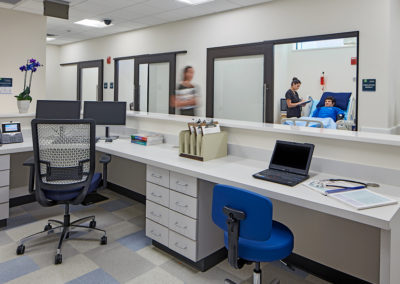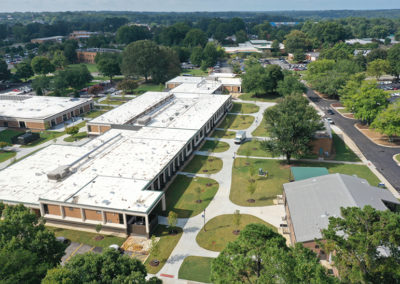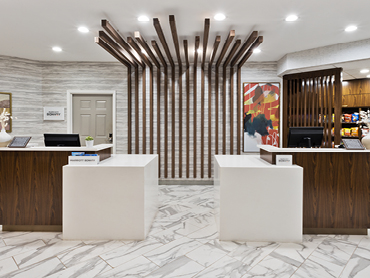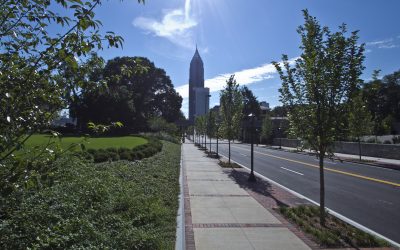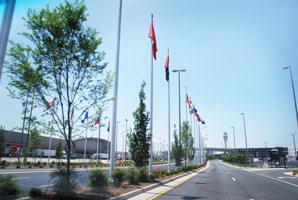NJANG’s Fighter Mission- 177th Fuel Cell and Corrosion Control Hangar - New Jersey Air National Guard, Egg Harbor Township, NJ
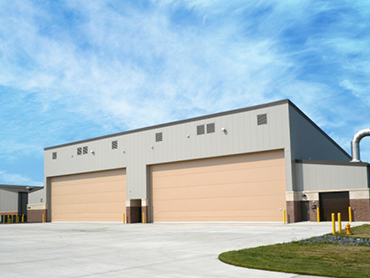
Always ready, always there is more than just a motto for the US National Guard. This creed is embedded into every element of its mission. The Air National Guard provides almost half of the Air Force’s tactical airlift support, combat communications functions, aeromedical evacuations, and aerial refueling. In addition, the Air National Guard has total responsibility for air defense of the entire United States.
Preparing the nation’s airmen means ensuring their aircraft are in operational readiness and equipped to meet evolving challenges. The 177th Fighter Wing Jersey Devils, based at Atlantic City International Airport in Egg Harbor Township, NJ, has been active since 1958. Their mission aircraft is the single-seat F-16C Fighting Falcon. Since October 1998, the 177th has had an active involvement in Operations Noble Eagle, Southern Watch, Northern Watch, Iraqi Freedom, and Enduring Freedom.
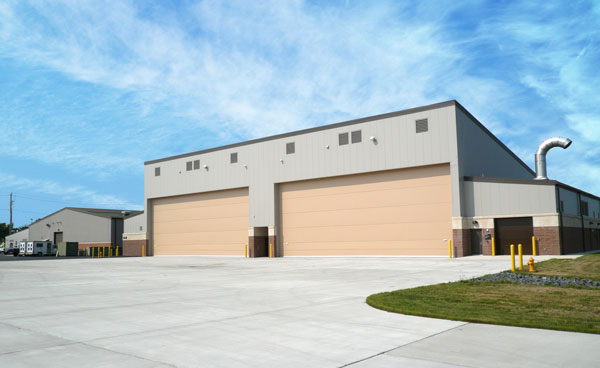
Fuel Cell and Corrosion Hangar
NJANG Makes Room for F-35 Aircraft
The New Jersey Air National Guard (NJANG) provides mission-ready citizen-airman, weapon systems and equipment with rapid combat and support capabilities to our federal and state leadership in cooperation with partner nations. To continue to be mission-ready, NJANG needed to update their facility and make room for the new, Fifth generation of fighter aircraft, such as the larger F-35.
This major Military Construction (MILCON) project of bedding down their aircraft and future larger aircraft would require a facility to support not only fuel cell needs but also corrosion-control maintenance. The facility would require two hangar bays sized to fit in the limited airfield space of 21,100 SF while avoiding jet blasts from the nearby runway.
Site and Environmental Challenges
The jet blasts from the F-16 were analyzed carefully because the upward-acting fabric door of the hangar will melt if the temperature gets too high. The analysis of the F-16 jet blast effects on building materials guided the location and the building envelope design. In addition, a jet blast fence was installed to protect the building envelope and workers in the ramp area. This location and design met FAA Part 77 clear zone requirements.
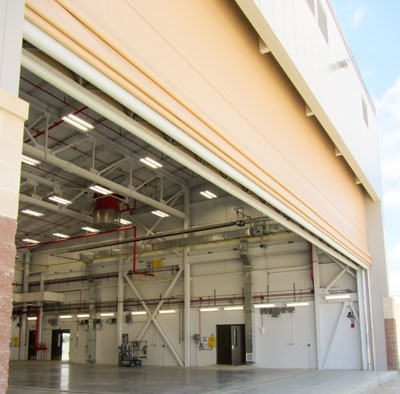
Upward-acting fabric hangar doors
Designing the Two-Bay Hangar
To beddown the aircraft, a two-bay hangar was designed to provide fuel cell and corrosion-control maintenance with fuel cell tools and equipment shops and tank maintenance spaces. To support the corrosion-control mission, Pond also provided parts washing, paint stripping, and paint booth areas. It was also important to the client that the hangar conformed to the other hangars on site by installing the same fabric door design. Pond’s design employed the upward-acting fabric doors chosen for easy maintenance compared to the traditional rolling doors that can degrade over time.
Pond also designed aircraft access aprons and taxiways to accommodate towed aircraft movement into and out of the two-bay maintenance hangar. Taxiway connection tied into an existing aircraft parking apron, requiring detailed drawings and specifications relating to doweling, joint sealants, and stripping. The facility meets all federal requirements and achieved LEED Silver certification.
Related Projects
Related News
Pond & Company Receives ACEC Honor Award
Pond & Company (POND) was the recipient of an honor award from the Georgia Engineering Alliance for their North Avenue: Re-Opening Georgia Tech’s Historic Gateway project during Georgia’s “Engineers Week” in February 2014. As a primary pedestrian corridor through...
Pond’s Experts Recognized as Industry Leaders
The American Institute of Architects and American Society of Landscape Architects recently recognized two Pond & Company leaders for their dedication to and expertise in their fields: Mark Levine, our Higher Education Practice Leader, was elected as the 2014 President of AIA Georgia and Matthew Wilder, Landscape Architect and Senior Project Manager, was chosen as 2014 President for the Georgia Chapter of ASLA.
ACEC Engineering Excellence Grand Award
The Maynard Holbrook Jackson Jr. Boulevard at Hartsfield-Jackson Atlanta International Airport project received the 2013 American Council of Engineering Companies (ACEC) of Georgia Grand Award for Engineering Excellence and the People’s Choice Award. Pond & Company, as part of The AIS Joint Venture, collaborated with The Ascend Joint Venture to overcome the design challenges of creating a new entrance to the world’s busiest airport.

